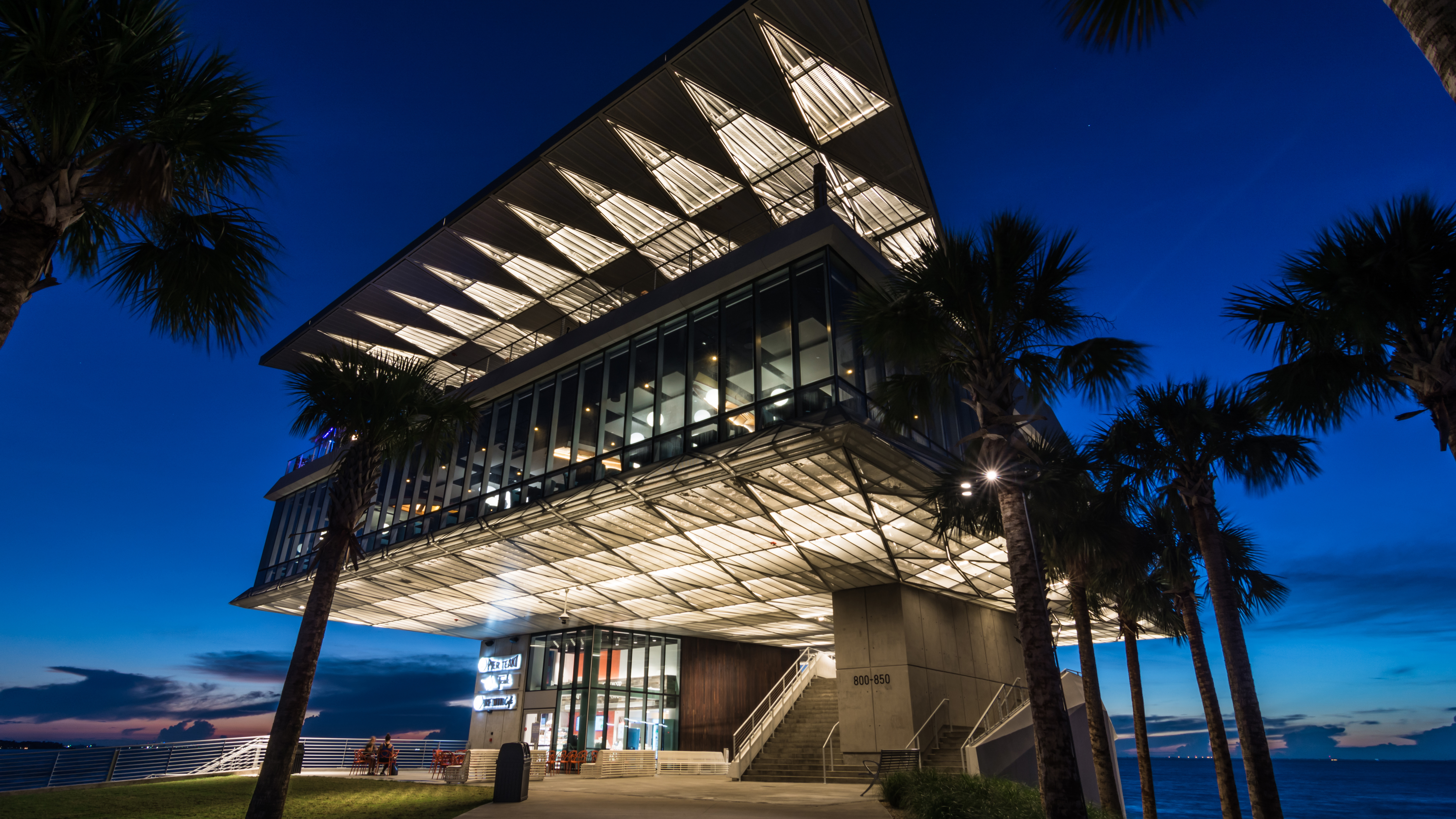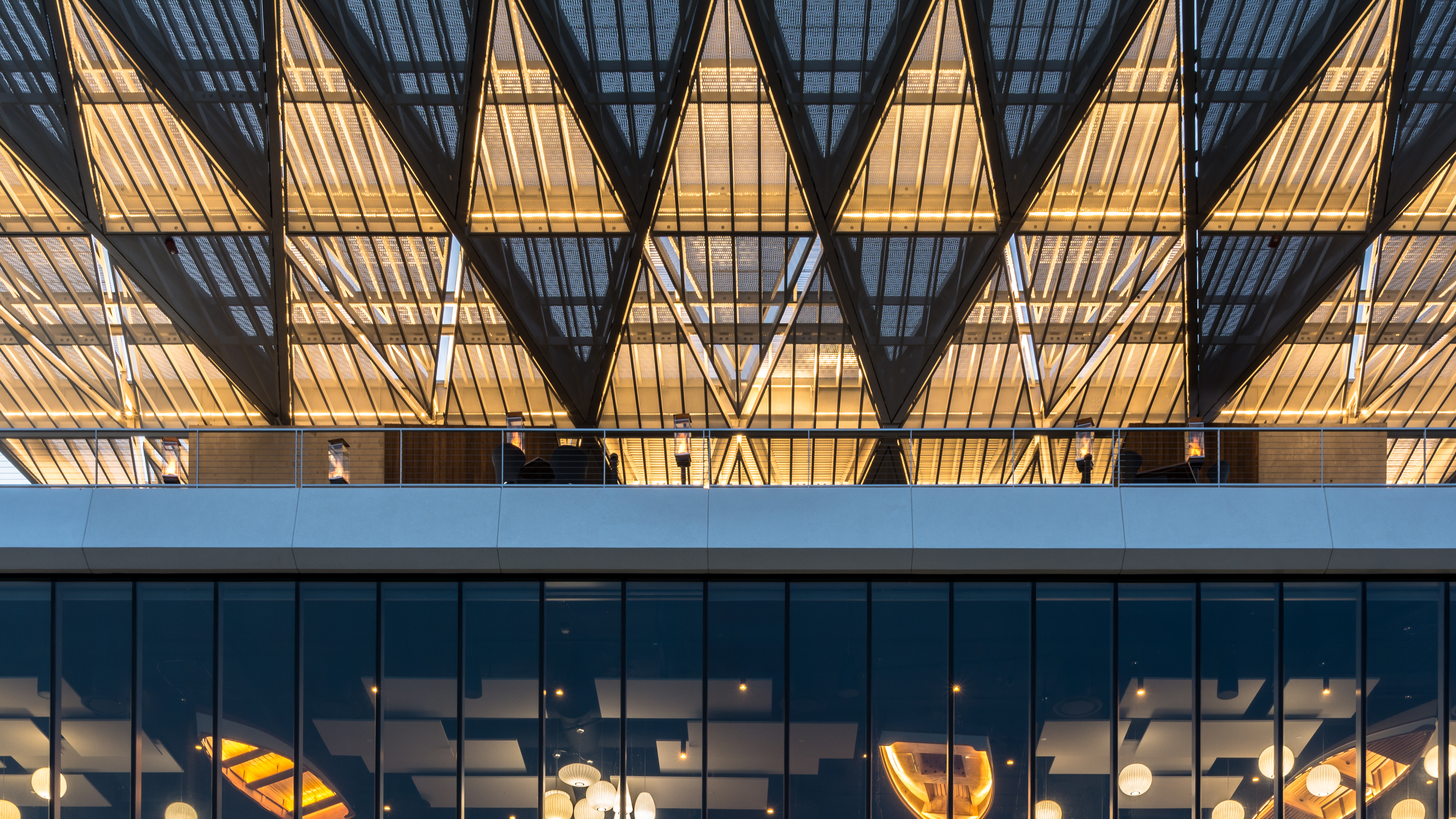The City of St. Petersburg, Fla., built its first municipal pier jutting out into Tampa Bay in 1913, and it has been an icon of the city ever since. There have been several iterations, including the Million Dollar Pier, which opened in 1926 and was replaced by the Inverted Pyramid Pier, which opened in 1973. But salt water and hurricanes can create a harsh environment, and in 2005, the city began searching for a solution.
The new St. Pete Pier features three buildings with metal roofs that speak to the material’s durability and lightness, offering a modern interpretation of an iconic destination

Photo: Brennan Photo Video
The result was a 26-acre park with 12 acres of walkable pier that includes a marketplace, museum, restaurants and, crowning it all, a five-story building that stands proudly at the very end of the pier and offers views of the city and the bay, and serves as a beacon at night, drawing in visitors. It is one of three buildings on the pier that utilizes metal panel roofing.

Photos: Brennan Photo Video
That light caught the judges’ eyes as well, earning the project the top award in the New Metal Roofs category. “It spoke to me in the most elegant way,” says Steven Ginn, founding principal, Steven Ginn Architects, Omaha, Neb. “Architecturally, it is the most enjoyable, and the roof is integral to that design.”
The use of perforated metal with light shining through it, as well as the lightness the material presents, gives the tiered building a weightlessness. “Everything you see that is a horizontal plane looks like it is metal,” says Tim Wybenga, LEED AP, principal, TVA Architects, Portland, Ore. “I think it’s an exemplary use of metal. A unique attribute of metal is its ability to be perforated and patterned in a way other materials just can’t match, and I think they did some really nice things with that on this project.”
The project architect for ASD|SKY, Atlanta, which partnered with New York City-based Rogers Partners on the design, was Tara Williams, AIA. She says, “The canopies on all buildings were critical for providing additional shaded areas throughout, which is why the large overhangs were developed. However, it was important to the design team to provide as much shade without blocking views or movement around the buildings … To achieve this, we selected a perf panel that would be lightweight, allow air to move through (to reduce the wind uplift), but still provide the feeling of shade, cover and comfort. The lighting was designed such that no lights are directed into your direct line of sight, so the building canopies provide that opportunity for lighting as well.”

The perforated panel is the EcoScreen by CENTRIA, Moon Township, Pa., and the aluminum eyebrows and framing panels were supplied by MG McGrath Inc., Maplewood, Minn., who also did the installation. The same panel system was used on all three buildings for the roof/canopies but with different overhangs on each building.
The education center building is uniquely shaped and features a steel eyebrow sunshade around the entire perimeter. The eyebrow is made up of steel triangular framing that matches the pattern on the pavilion building.
“On the pierhead building, there is a separate perforated metal skin that wraps the facade, as well as the soffit below the restaurant,” says John Curran, AIA, project manager for ASD|SKY. “It utilizes the same perforated panel, but is primarily aluminum framed, and uniformly lit, in lieu of the triangle pattern on the canopies.”

While the lightweight perforated panels helped minimize wind uplift, it is their ability to diffuse and soften light that gives them their greatest architectural impact. “The panels provided a unique opportunity to illuminate the structures and the surrounding areas,” says Williams. “Each building acts as a beacon on the pier and illuminates its surroundings with indirect expressive lighting. The design team’s motto through the whole project was that ‘we like light but don’t like to see lights.’ The perforated panels provided a beautiful and soft light expression that provides the needed lighting but also accentuates the roof structures in a transformative way.”
Wybenga says about the pierhead building, “This is a great building, and it is obviously an innovative use of multiple metal materials.”






